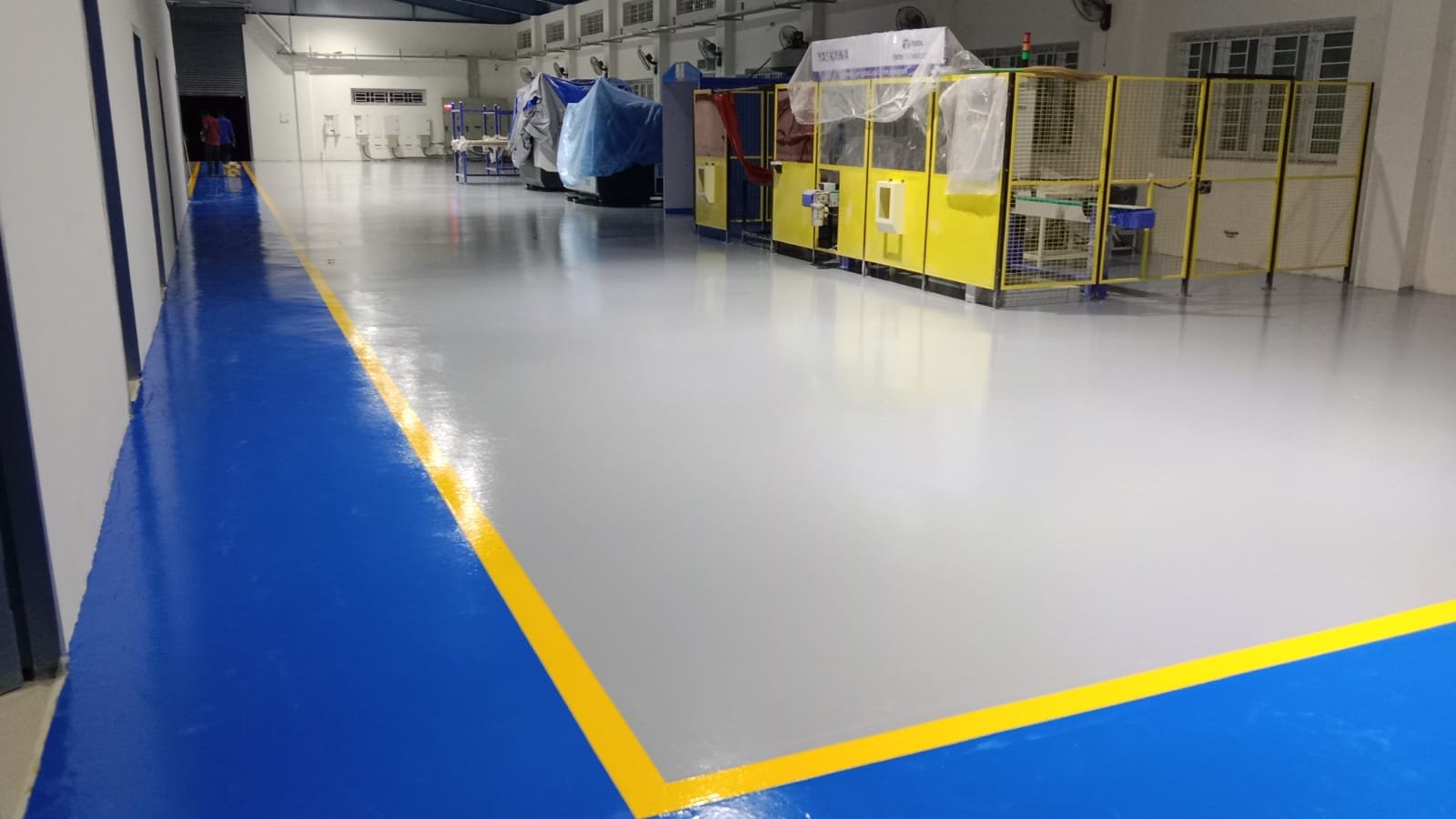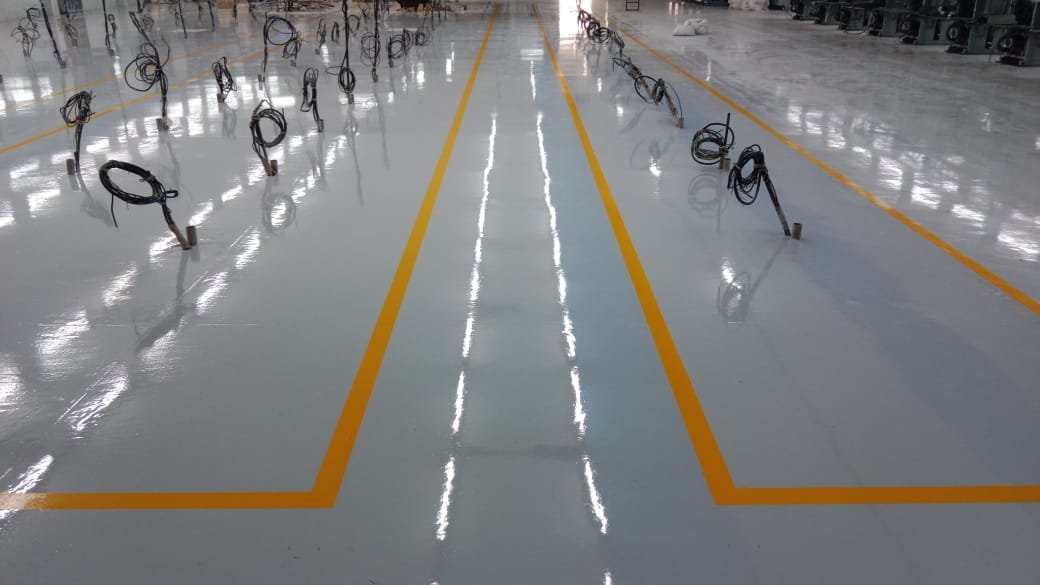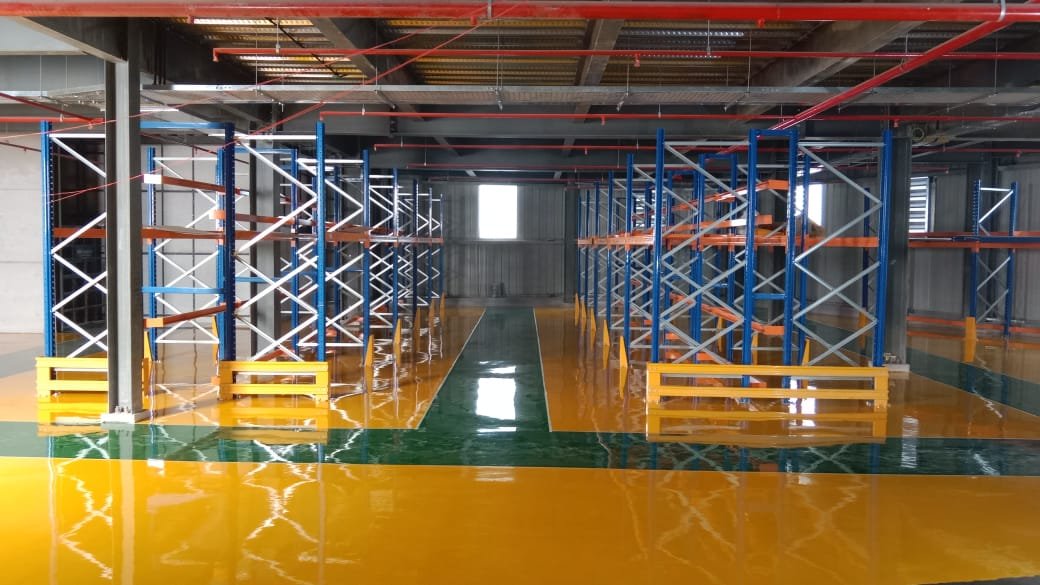EPOXY FLOORING SERVICE APPLICATION METHODS
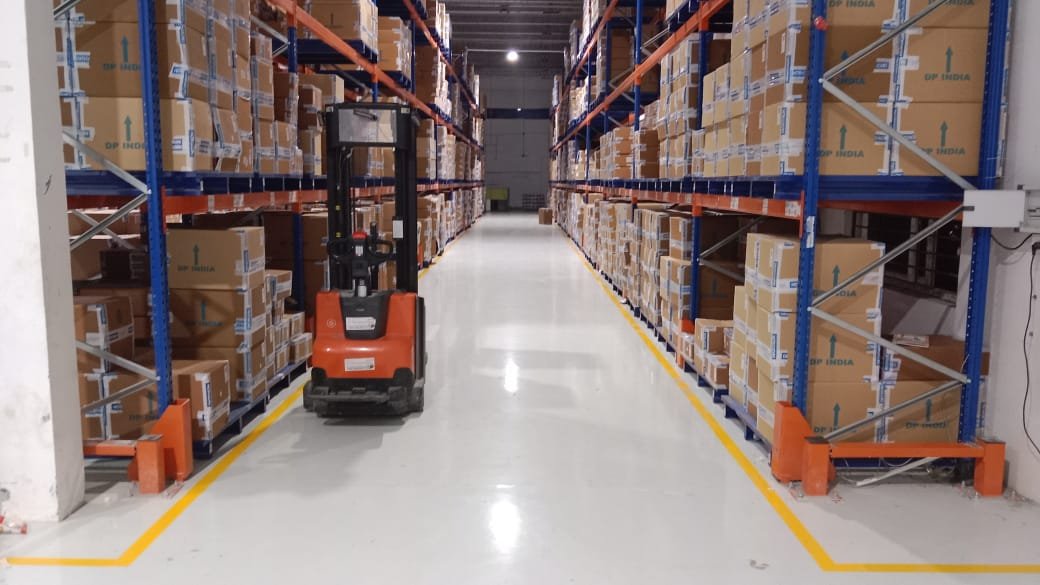 EPOXY
EPOXY
FLOORING SERVICE APPLICATION METHODS
INTRODUCTION
Epoxy flooring is a durable and versatile flooring option used in a
variety of commercial, industrial, and residential settings. Proper application methods are essential to ensure a high-quality finish
that meets the requirements of the space. Professional epoxy flooring
contractors will select the most appropriate method to ensure a high-quality
finish that meets the client’s requirements.
METHODS OF EPOXY FLOORING
SERVICE APPLICATION
Here are some common epoxy flooring application methods:
Roller Application:
Roller application is one of the most common methods used for applying
epoxy coatings, especially in smaller areas or where precise control is needed.
It involves using a roller to spread the epoxy mixture evenly over the
prepared substrate.
This method is relatively simple and allows for uniform coverage.
Squeegee Application:
Squeegee application is ideal for covering large areas quickly.
This method is efficient and helps to achieve a smooth and level
surface. And it is suitable for industrial or commercial settings with
expansive floor areas.
Trowel Application:
Trowel application is commonly used for applying epoxy mortar systems or
for patching and repairing damaged areas.
It involves spreading the epoxy mixture onto the substrate using a
trowel and then smoothing it out to the desired thickness.
This method allows for greater control over the thickness of the epoxy
layer. It is suitable for areas with heavy traffic or where extra durability is
required.
Spray Application:
Spray application is often used for applying epoxy coatings to large or
complex surfaces.
It involves using specialized spray equipment to evenly distribute the
epoxy mixture over the substrate.
This method can be faster than traditional application methods and is
suitable for projects such as parking garages, warehouses, or sports
facilities.
Broadcast Application:
Broadcast application involves scattering decorative flakes or
aggregates onto the wet epoxy surface.
This method adds texture, visual interest, and slip resistance to the
epoxy flooring and is commonly used in commercial and residential applications.
Slurry Application:
Slurry application is similar to trowel application but involves mixing
the epoxy with a fine aggregate filler to create a thicker consistency.
This method is often used for repairing damaged concrete surfaces or for
creating a seamless epoxy flooring system with enhanced durability.
Self-Leveling Application:
Self-leveling epoxy is a specialized type of epoxy flooring that is
poured onto the substrate and naturally levels out to create a smooth, seamless
finish.
CONCLUSION
Epoxy flooring offers a durable, chemical-resistant, and aesthetically
pleasing solution for a variety of residential, commercial, and industrial
spaces. The success of an epoxy flooring project relies heavily on the
application method chosen and executed by skilled professionals. Choosing the
appropriate application method depends on factors such as project size,
substrate condition, desired performance characteristics, and aesthetic preferences.
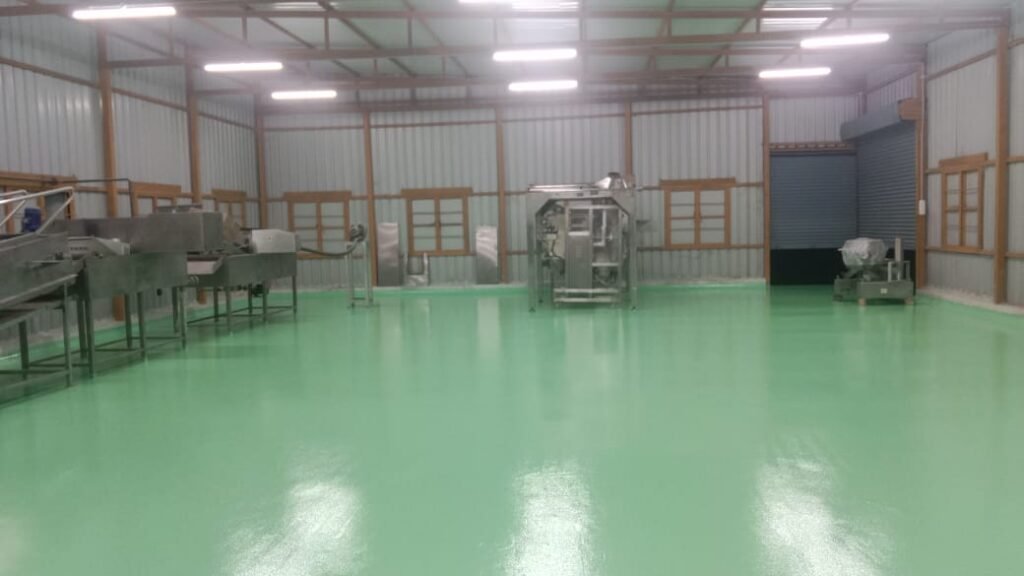
Related Posts
Leave a Reply Cancel reply
You must be logged in to post a comment.

